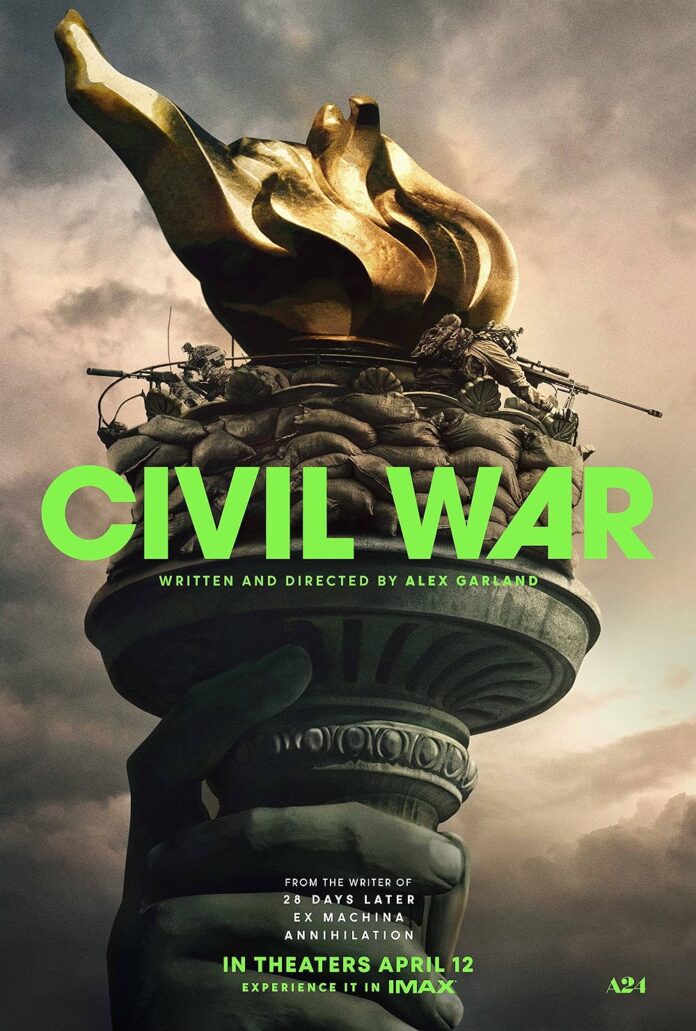By Hank Holland | Reporter
Alex Garland’s newest movie, “Civil War,” debuted this week, and it follows a group of journalists in the midst of a new American domestic conflict. The movie is very technically impressive, but it leaves much to be desired in its story.
Before its release, the film gained traction for its dystopian setting. The film is set in the middle of a new civil war in America, where an overreaching president (played by “Parks and Rec” icon Nick Offerman) has spurred secession, most notably that of Texas and California, whose alliance is dubbed “The Western Forces.” A team of journalists — both veteran and amateur — make their way to Washington to secure a final interview with the president before his inevitable loss.
In terms of technical achievement, I think “Civil War” is a very well-made movie. Its use of sound design creates the illusion of real fire-fights, and its visual design makes the photojournalism effects very satisfying. Its biggest problem technically is that its needle drops are some of the worst ever put to screen. There were several times when sudden bursts of music completely took me out of the scene. All in all, there are a few speed bumps, but it’s an immersive movie.
The story is a completely different can of worms. Garland takes the sideshow of American politics and dials it up to its logical conclusion. However, “Civil War” attempts to comment on both war and the art it produces — and it fails at both.
French film critic Francois Truffaut once said, “There is no such thing as an anti-war film,” and “Civil War” is no exception to this. The film makes several attempts to paint modern warfare as a cruel and almost menial task, with little rationality behind it. Jesse Plemons’ character is a great example of this attitude; his violent acts are ruthless and almost incoherent. However, when mixed with scene after scene of militant, muscled soldiers coldly and efficiently taking out people, it almost separates the two.
This is also a problem with the movie conceptually. The president is painted as so overtly evil that of course I start cheering when the Western Forces mow down Secret Service members. This effect is contrary to Garland’s supposed message. The concept of a “war is hell” movie only works as long as you avoid having clear good guys or bad guys. In his attempt to make an anti-war film, Garland (in my opinion) inadvertently made a pro-war one.
The film’s main troupe, led by Kirsten Dunst and Cailee Spaeny, feels half-written. Dunst’s character is a hard-boiled journalist numbed by conflict and stays that way for the whole film. Spaeny’s character only works to become an exact copy of Dunst’s. In a way, I feel that this also achieves the opposite point Garland wants to make. If journalists are such vulnerable and emotional people, why turn them all into cold-hearted cynics?
If these contradictions are intentional — and I would love to give Garland the benefit of the doubt — then I absolutely love this movie. At its best, it shows the vicious cycle of war breeding art, only to then create more conflict. At its worst, it is hypocritical.






